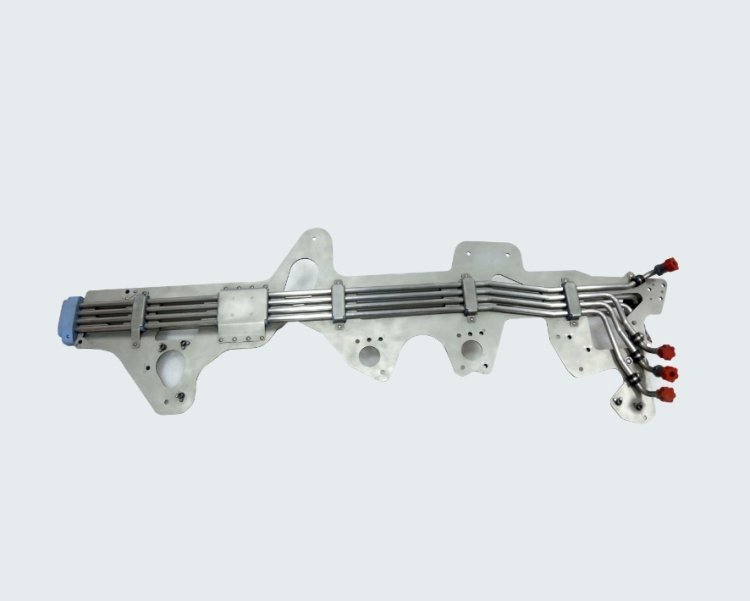What Tube Materials Rule the Skies? A Guide to Aircraft Tube Selection
Our company offers precision-engineered tubes for diverse applications, ensuring durability, reliability, and superior performance.

Every component of an aircraft is essential to maintaining performance, efficiency, and safety. Among these components, tubing materials are vital elements that warrant careful consideration. The choice of tube material and the tube manufacturing company significantly influences an aircraft's structural integrity, weight, maintenance requirements, and overall operational success.
This guide explores the world of aircraft tubing materials, their characteristics, applications, and the factors that govern their selection. It also touches upon other aircraft components, such as aircraft actuators.
Understanding the Importance of Tube Materials
The aviation industry's relentless pursuit of efficiency, safety, and performance hinges on the meticulous selection of materials, particularly when it comes to the vital components such as tubes. These tubes play a pivotal role in facilitating the seamless flow of crucial elements like fuel, hydraulic fluid, and air within the intricate network of an aircraft's systems. Navigating through an array of challenges, including high pressures, extreme temperature fluctuations, and constant mechanical stress, these tubes stand as unsung heroes, quietly ensuring the reliability and safety of every flight.
The selection of appropriate materials for these tubes becomes a critical decision, directly impacting the aircraft's operational dependability and overall safety standards. Delving deeper into the world of tube materials in aviation unveils a fascinating realm where innovation and engineering converge to overcome the formidable challenges posed by the demanding conditions of flight
Common Tube Materials
- Aluminium Alloys: Aluminium alloys, such as 6061 and 7075, are extensively utilized in aircraft manufacturing due to their remarkable combination of strength, lightweight properties, and resistance to rust. These alloys are particularly advantageous for tube production, as they are easy to shape and join, essential attributes in creating intricate tubing systems. In instances where heightened strength or resistance to specific chemicals is required, tailored aluminium alloys prove their versatility, underscoring the adaptability of these materials in diverse aerospace applications.
- Stainless Steel: Stainless steel, exemplified by grades like 304 and 316, plays a crucial role in aircraft tubing, especially in critical systems where strength and corrosion resistance are paramount. The inherent robustness of stainless steel makes it a reliable choice for hydraulic and pneumatic systems, as well as in aircraft actuators. This material's resilience in harsh conditions underscores its significance in ensuring the longevity and dependability of essential components within aircraft systems.
- Titanium: Renowned for its exceptional strength-to-weight ratio, titanium stands out as a key material for reducing aircraft weight without compromising durability. Widely incorporated in tubing for its superior strength, heat resistance, and corrosion resistance, titanium becomes indispensable in demanding aerospace environments. Although cost considerations and manufacturing complexities may have limited its widespread use, ongoing advancements are likely to overcome these barriers, further enhancing the efficiency and safety of aircraft design.
- Composite Materials: The aviation industry is witnessing a transformative shift with the increased adoption of composite materials, such as carbon fibre-reinforced polymers (CFRP), in aircraft construction. CFRP tubes offer unparalleled fatigue and corrosion resistance compared to traditional metallic alloys. While the potential for weight reduction and performance improvement is enticing, the widespread adoption of composite materials in aircraft tubing faces challenges related to manufacturing processes, stringent certification requirements, and associated costs. However, ongoing research and development efforts hold the promise of overcoming these hurdles, paving the way for a future where composite materials play an even more significant role in advancing aircraft technology.
Factors Influencing Tube Material Selection
- Operating Conditions: The environmental conditions in which the aircraft operates, such as temperature extremes, exposure to corrosive elements, and pressure requirements, dictate the choice of tube material.
- Weight Considerations: Aircraft manufacturers work to minimise weight to increase performance and fuel efficiency. When choosing a material, the density and strength-to-weight ratio of the tube material are essential considerations.
- Compatibility with Fluids: To avoid chemical reactions that could jeopardise the system's integrity, compatibility with fluids, such as gasoline and hydraulic fluids, transported via the tube is crucial.
- Maintenance and Lifecycle Costs: The durability, ease of maintenance, and longevity of tube materials directly impact the operational costs associated with aircraft maintenance and repair. They are essential considerations when choosing tube material.
Conclusion
Choosing the best tube material for aircraft applications is a process that necessitates a thorough understanding of the operating specifications, environmental variables, and performance standards. Every tube manufacturing company and all aircraft designers must carefully consider each material's advantages, disadvantages, and suitability for the intended use before selecting from aluminium alloys, strong stainless steel, lightweight Titanium, or cutting-edge composite materials. By making informed decisions in tube material selection, aviation stakeholders can ensure aircraft operations' safety, reliability, and efficiency, ultimately contributing to advancing aerospace technology.
What's Your Reaction?











![Wireless Connectivity Software Market Size, Share | Statistics [2032]](https://handyclassified.com/uploads/images/202404/image_100x75_661f3be896033.jpg)




